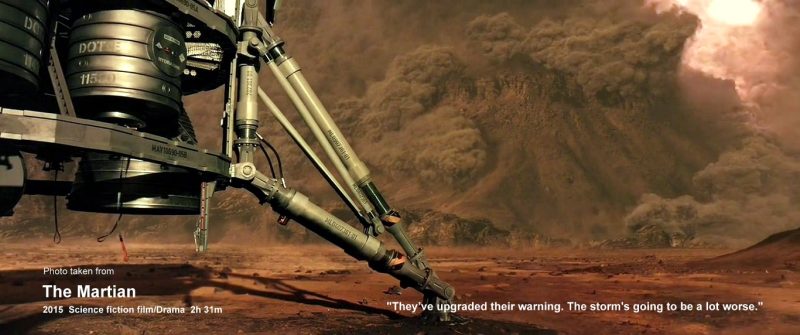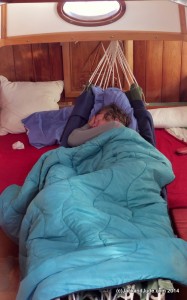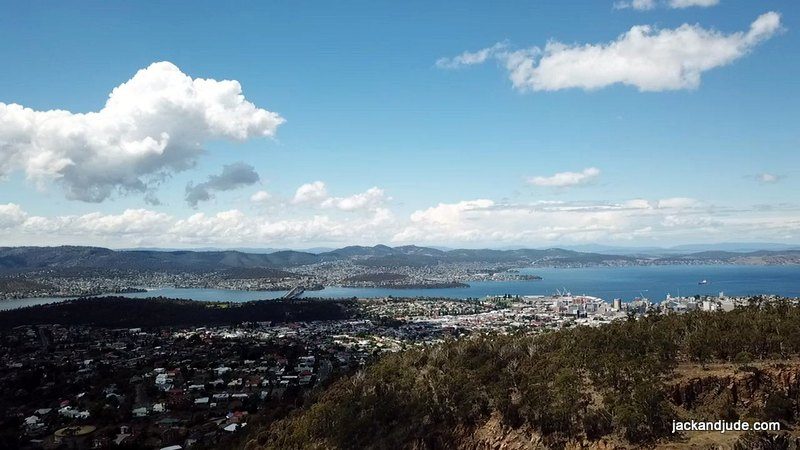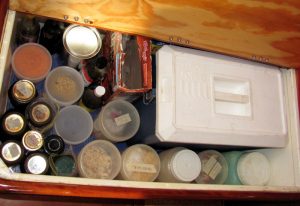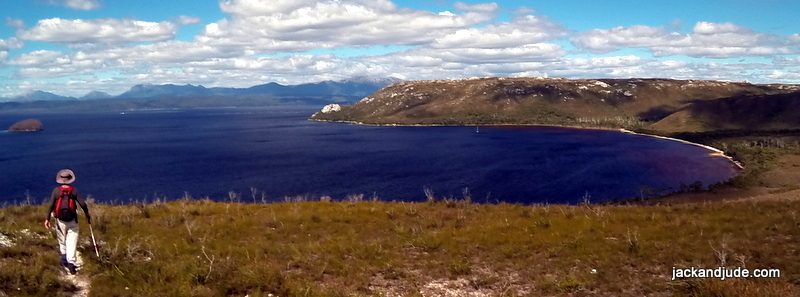December 2017 Nov 2017 >>
Blog of Jack and Jude
explorers, authors, photographers & videographers
“They’ve upgraded their warning. The storm’s going to be a lot worse.” And so starts the drama of staying alive in “The Martian,” which is one of our favourite movies because not only are the effects impressive and the acting convincing, but also because crossing an ocean aboard a small boat is something akin to being isolated on a faraway planet. Help can be a long time coming so self-sufficiency is paramount to our safety. Jack and Jude have crossed a lot of oceans and have survived some horror situations, and so following on from last week’s great storm tactics article on Deckee.com by Jessica, I thought I’d record what I think is equally important, and that is fatigue.
Shorthanded crews thinking of sailing the world as well as coastal sailors will find tips here on how to mitigate fatigue and survive. So here goes.
Preparing for an extended voyage is daunting. It’s a tiring task ensuring everything is in good working order, then gathering long lists of provisions and getting them aboard. Doing so takes heaps of mental concentration that’s sometimes not evident until the lines are cast off, when relief floods the mind as we slump to gaze at the land slipping astern.
Take all the rest you can get
In our earlier days of sailing when we took other people across oceans, we’d often have to tend to their mal d’mer or keep them company with their amazement or anxiety. Or they’d slump below and fall asleep because the sudden never ending motion simply knocked the last bit of energy right out of them. So the rule is. Take all the rest you can get.
From firsthand experience, fatigue deepens over time and that can cause bad judgment and the inability to focus on a problem. In the extreme, I’ve even hallucinated, when one night I imagined that a passing vessel had turned about and thought they were pirates, only to find it was another craft.
Sea berths and hammocks
So, rest all you can, even if it’s just a lie down. Falling asleep is a bonus. A good sea berth helps. One that is low, fore and aft, and a tight fit so you don’t roll back and forth. Stuffing cushions in around your body and head helps. I sometimes use our hammock. They take a bit of getting used to, but once you’re asleep, it’s like being on solid ground, so much so, getting out can be tricky. There’s a reason the navies of the world had their crews in hammocks besides saving space.
As the days go on and on, our set routine for off time is invaluable. I generally always lie down. Even if I do not sleep, just lying horizontally polarized gets me ready for my night watch. In rough conditions I might go two or three nights without sleep and I find lying down, mind as blank as I can, refreshing.
Prepare as much as you can before departure
Another point is to prepare as much as you can before all the rocky-rolling action begins. Jude prepares meals in port and stores them in the fridge, which is so handy the first few days out when we’re at our lowest. Tasty prepared food is also available off the shelf, very handy for a single late night meal.
On board Banyandah, unless the wind is expected to lessen, we’ll put a reef in the main during the midnight changeover, ensuring the off watch doesn’t have to get up if conditions freshen.
Learn to hove to
For us, crossing an ocean is not a race, so the next tidbit is to learn to hove to. It’s a handy technique to avoid arriving in darkness as well as getting much needed rest. Therefore, when you get buggered battling the bad stuff, take a break and be refreshed. Just so you know, at the other extreme, when there’s no wind, we mostly drift. Why spoil all that peace and isolation with a noisy engine. While drifting we’ve had the most magnificent seabirds paddle up to us, looking for a hand out.
That favorite movie of ours ends with the hero standing in front of a classroom of new recruits delivering a humorous, yet serious monologue that we all could follow.
“When I was up there stranded by myself, did I think I was going to die – yes, absolutely. And that’s what you need to know because it may happen to you. This is space. (pencil in ocean) It does not co-operate. At some point, everything is going to go south on you, everything. And you’re going to say, this is it. This is how I am going to end.
Now you can either accept that, or you can get to work. That’s all it is. You just begin. You solve one problem. Then you solve the next one. And the next. And if you solve enough problems, you get to come home.”
Saw this and thought “so true”
Lisa Blair commented, “You need to visualise what it’s going to be like. If I hadn’t done that, I think I would have let the fear override the logic.” We just thought this sums up what we’ve always told the young and old, “Fear freezes the mind. Be prepared, be bold, and do it.”
Back Afloat
It’s starting to rain, and so a good time to ease off after a hot, somewhat hectic journey across the state of Tasmania by bus, and then landing back on board the good ship Banyandah. It’s taken a week to make the transition from landlubbers to life afloat, but we’re now dead center of the ever changing theatre of Nature – Amazing and feeling privileged. No wonder we don’t think about TV when afloat.
After six months on her own, we found our lady squeaky clean, washed by the many west coast storms, but dry inside, no mould, or maybe just a titch round the plastic aft portholes.

At Peace ~ Back Afloat
Hip hip hooray! Once again Jack and Jude have made the transition from landlubber to life afloat, and it went swimmingly thanks to good friends Barry and Wendy who picked us up from the airport then eased us into their lovely place under the shadow of The Mountain. But it wasn’t all smooth sailing. [Read the full account]
Perfect gift for sailors and armchair adventurers
Celebrating 10 years producing videos – 2007 / 2017
All our films and shorts on USB Memory Stick –
A perfect Christmas gift for sailors and armchair adventurers.
Last summer, while in the wilderness looking for Gould’s track, I was thinking of my video workstation back at the shack and planning to re-engineer our earlier videos into widescreen high resolution files that could be loaded onto a memory stick. That project was a great success and good fun too, although hugely time consuming and quite challenging. I very much enjoyed a couple of months reminiscing while viewing the video footage recorded these last ten years.
Extras on stick – 11 hours of viewing
Putting our DVD Videos on a USB Memory stick has given us an opportunity to also give out a slew of extras – like the drone footage of remote locations we filmed this year, along with a peek at places filmed over the years, WA King George River and Daw Island on the edge of the Bight. A complete list of the video files can be found here.
28 files – 11 hours of viewing – delivered worldwide
Single DVDs also available on USB Flash Memory
Practical Tid-bits
Dry Food Lockers
On Banyandah, some lockers have names. That makes it easy when one of us asks ‘where is?’ I also have an Excel spreadsheet of ‘Banyandah’s stores’ which lists all food stored by each locker. Using Ctrl F (find) and the food name saves a huge amount of unnecessary searching.
The image shows our large rectangular ‘Breakfast Locker’, amidships under the saloon seat. It is perfect for bulk storage. Being low down in the boat, with non-slip mat lining the floor, nothing slides around. Even a rarely used Eski has a home there for storage of flour and grains. The hinging lid, opening athwartships, stays open when underway.
Some advantages of this large central ‘Breakfast Locker’.
1/ Open cereal boxes don’t need lifting out; we take our breakfast bowls to the locker so there’s less spillage at sea.
2/ When making bread, flour is scooped directly from the container with a place to rest a bowl while I do this.
3/ Tall bottles standing upright between the large plastic containers don’t clank. Homemade ‘bottled’ food tucks safely in the corner with sock muffs protecting the glass.
A small ‘Cook’s Locker,’ convenient to the galley under the cook’s seat, holds heaps against the hull on carpet with everything inside stored in zip-lock bags. I can still find things quickly in this locker because it’s packed with clear zip-lock bags.
Tip. Zip-lock bags are useful for storing dry goods weighing less than 1 kg. Food inside is visible so there’s no need to label. The bags lie flat so much more can be stored in a small space and they stay put on my galley bench when in use.
Download more photos and details: Practical Boat Bits and Tips by Jude Binder
Australia Circumnavigation 2007 – 2009

After 16 years sailing the world with our sons, followed by 16 years on the land, Banyandah was relaunched in 2007 and immediately we set off to circumnavigate Australia – a voyage of two years. Photos can be found here.
Tasmania Cruising Guide UPDATE dispatched
What a great response! Proving that electronic guides are a fabulous way of keeping up to date. If you requested an updated version of our Tasmania Cruising Guide and did not receive your emailed link, perhaps you could check your spam folder.
A few of the wonderful comments we received –
“I’ve sailed here for nearly six decades and still find your guide delightful and informative,” from Christian.
“Greatly useful,” from David.
“Fantastic book – cannot thank you enough for all the valuable info you have put together.” from Michael.
“Hi Jack, you have done an excellent job of your guides,” from Ian.

To receive such nice words of appreciation makes our efforts very much worthwhile. Thank you.
DECKEE.COM
We have been associated with Deckee.com, and with Mike, Jessica, and Ian, ever since Deckee burst upon the net a few years back. They very rightly saw a need for an Australian boating website where sailors like you and us could share our experiences and knowledge. By putting in a tremendous amount of hard work, and a fair bit of their own cash they created Deckee.com, and Jack and Jude were right there helping out by sharing a heap of our anchorage information and proven ideas.
Wow! How it’s grown!
Today there’s an incredible community of boaters on Deckee who have so far contributed over 1900 reviews to help all of us make better decisions! So, next time you need to find a marina, a reputable serviceman, get your vessel insured, or check out an anchorage, anything to do with boating, head on over to Deckee.com and climb on board. We’re sure you’ll be delighted.
Here’s a heads up – Why not sign up and join the community, it’s FREE and you’ll also receive their weekly Deckee Digest
Ain’t it grand when you get instant advice and great service at a competitive price
Recommending –
Macarthur Camera House at Macarthur Shopping Centre, NSW 2560
I love to write when I have something interesting or informative to say and that sums up why it’s been a bit quiet around here lately. But that’s changed recently because while we’ve been getting ready to rejoin our beloved Banyandah quietly waiting in Tasmania, we purchased a new drone. A difficult decision resulting in a big headache. [Read About it Here]
WILDCARE Group for Macquarie Harbour and Waterways

Just imagine, by joining Wildcare for an easy $25, you could have a unique, fun experience exploring this world famous location with a group of experienced locals while at the same time help sustain the World Heritage wonders of western Tasmania. This new group is assisting Parks and Wildlife by maintaining some of the walking tracks, while larger tasks such as the rebuilding of the hut at Sir John Falls and other projects are being planned.
This summer the Macquarie Harbour and Waterways Wildcare Group want to clear and re-tag two beautiful tracks.
The first is an open, easy walk with fabulous views connecting the Harbour to the wild west coast, a perfect day’s outing from Betsys Bay. The group will be ferried down harbour from Strahan to Betsys Bay, where camp will be setup at an existing site. Depending on weather, clearing the thickened bush and re-tagging the track, along with collecting trash should take no more than three days in January, at a time yet to be determined.
The group’s second task is more challenging. In 1842, a track was cut to take Governor Sir John and Lady Jane Franklin from Hobart to the west coast so that they could better judge the difficulties, dangers, and potential natural wealth of the west. This track came out on the Gordon River at Eagle Creek and the section joining the Gordon and Franklin Rivers was still in use by walkers and rafting parties circa 1990. But when those trips ceased, the thick rainforest reclaimed the track. Our group has worked with great gusto and a fair bit of determination these last few summers to re-find and clear this 10 km track that traverses an amazing land. But a few wet, windy winters have made the middle section a bit of a mess, and therefore this summer we plan on sending in two or three working groups to clear and make safe this track that passes through some of the area’s most exquisite wet forests. Transport from Strahan will be provided. Applicants will need to be bush savvy, fit, and have suitable camping gear. The actual itineraries have not yet been published. Interested people can contact the Secretary, Jack Binder for further information.

